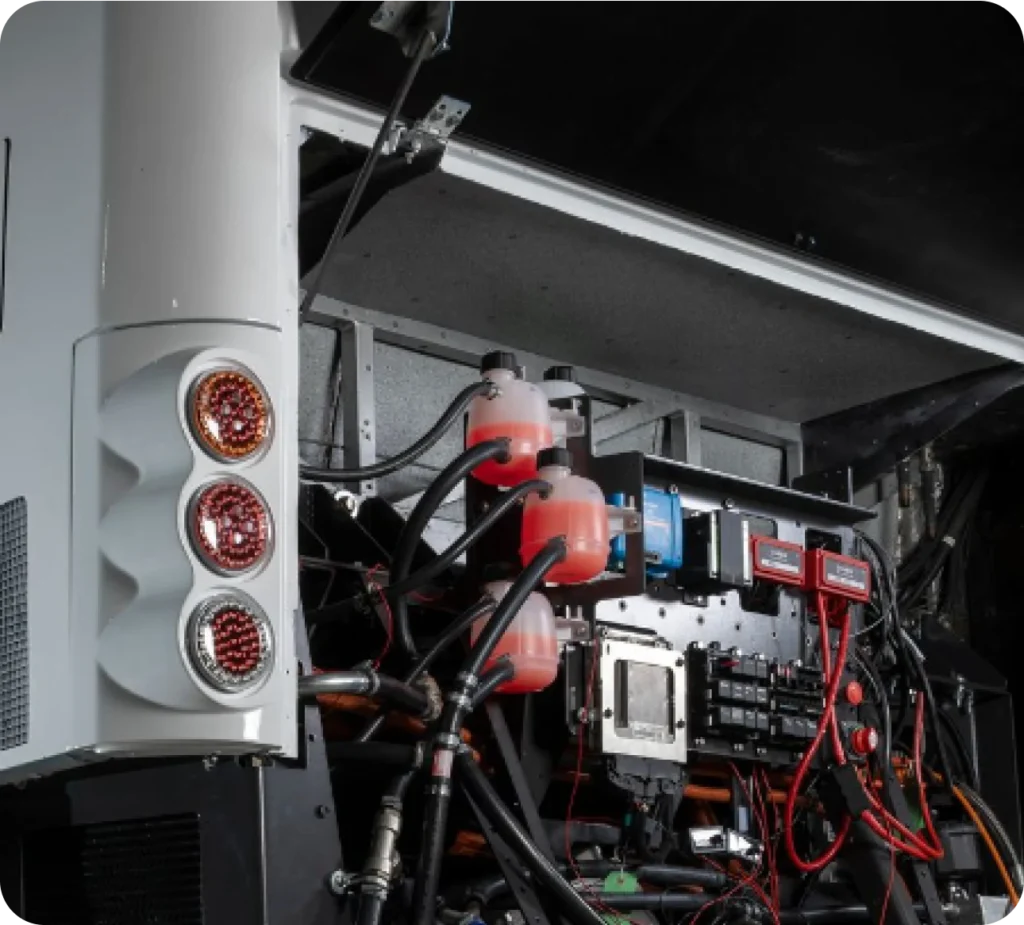SEIS is the Government’s Seed Enterprise Investment Scheme.
It allows companies to raise SEIS funding at the seed stage of their business lifecycle, which they might otherwise find difficult to do.
The SEIS relief scheme is designed to make it attractive for private investors to put money into startup enterprises, receiving significant tax breaks in return.
To apply for SEIS as a means of attracting investment and raising funds, companies must meet certain criteria, and seek advance assurance from HMRC.
What is SEIS Funding?
HMRC introduced SEIS in 2012.
It is an initiative that encourages innovation by giving private investors tax breaks when they invest in enterprises that qualify for the scheme.
These eligible companies are early-stage, high-risk enterprises.
Seed stage is at the start of a business’s development. Typically, for many enterprises at this stage, obtaining funding to take concepts forward is challenging.
They are unlikely to have a proven market or customers. This is especially true of tech companies looking to innovate with their products or services.
SEIS investment aims to address these funding challenges by making it more attractive for private individuals to invest in seed-stage companies.
What Kinds of Companies are Eligible under SEIS?
For a company to qualify for SEIS investment, it must meet these criteria:
- It must have fewer than 25 employees
- It must have been trading for less than two years, and
- Its gross assets must be valued at no more than £200,000
For larger companies, there is an alternative, the Enterprise Investment Scheme (EIS).
HMRC sets out various other conditions for the type of company that can use SEIS:
- It must carry out a new qualifying trade (see below)
- It must be established in the UK
- It cannot be trading on a recognised stock exchange at the time it issues shares to SEIS investors
- There must be no arrangements for it to become a subsidiary of another company or a quoted company at the time of issuing shares
- It cannot be controlling another company unless it’s a qualifying subsidiary
- Since its date of incorporation, it must not have been controlled by another company
SEIS encourages innovation, so there is a wide range of trades that can qualify for it, but there are certain areas of business that exclude a company from the scheme. These include:
- Legal or financial services
- Leasing services
- Banking, insurance, debt or financing
- Property development
- Gas or fuel production
- Generating or exporting electricity
- Running a hotel or nursing home
Where a company’s business is made up of more than 20 per cent of any of these activities, it will be unable to apply for SEIS.
The Government publishes a full list of excluded activities.
How Can a Company Spend SEIS Money?
Under SEIS, a company can raise a maximum of £150,000 in funding.
It can spend the money on qualifying business activities, or on preparing to do these activities. Research and development (R&D) activities also come under SEIS, providing they lead to qualifying business activities.
For business activity to qualify for a SEIS grant, it must have the aim of making a profit and must not amount to more than 20 per cent of any activity excluded under the scheme (as explained above).
SEIS investment must:
- Be used to grow and develop the business
- Not be used to buy all or part of another business
- Be spent within two years of the investment or when the company started trading
What are the Benefits of SEIS Relief for Investors?
An individual investor can put up to £100,000 into a qualifying SEIS company in a single tax year.
Obviously, they cannot invest in total above the £150,000 limit the company can raise under the scheme.
The investor must be a private individual, and they cannot be an employee of the company they invest in.
The investor can get tax relief reliefs on this investment. Some will be dependent on tax brackets, but others offer automatic loss relief and reductions to capital gains allowances.
To qualify for SEIS relief, the investor must hold shares in a SEIS company for a minimum of three years.
The various types of tax relief available for SEIS investors include:
- Individual income tax relief of 50 per cent
- Exemption from capital gains tax on earnings from profits
- Capital gains reinvestment relief
- No inheritance tax on SEIS investments.
- Loss relief
With capital gains reinvestment relief, investors can claim up to 50 per cent of the tax they’ve paid on other investments, so long as they reinvest this money in a SEIS enterprise.
Loss relief is another incentive for investors, under SEIS. If they buy shares in a SEIS company and end up selling them at a loss, they can offset this loss against their income tax or capital gains tax liability.
How to Claim SEIS Loss Relief
The investor in an SEIS company can claim loss relief on the year of the loss.
They can then offset this loss against either their current tax bill, or the previous year’s bill.
They can choose between income tax or capital gains tax when it comes to offsetting the loss.
If filling in a self-assessment tax return, the investor should complete an SA108 form to claim SEIS losses against income tax or capital gains tax.
- For income tax, the share loss relief will come as a deduction in calculations of the claimant’s net income for the year of the loss, the previous year, or for both
- For capital gains tax, the claimant can offset the share loss against a capital gains tax bill for current or future years.
The investor can also claim loss relief within the minimum three-year shareholding period if the SEIS company is wound up for genuine commercial reasons.
This is an important aspect of investing in SEIS companies, as it means investors won’t lose all their investment should the company fail.
How Investors Claim Their SEIS Tax Relief
To claim tax relief on a SEIS investment, the claimant must first have a SEIS3 form issued to them by the company concerned.
The SEIS3 confirms the amount the investor has invested and states that it is eligible for tax relief.
The Small Companies Enterprise Centre (SCEC), part of HMRC, issues SEIS3 forms to an eligible company when either:
- It’s been trading for four months, or
- If it’s spent 70 per cent of total investment
The company can then pass the SEIS3 forms to investors, for them to include with their tax return submissions.
Applying for SEIS
An eligible business can apply for SEIS funding but it must make sure it complies with government rules and requirements:
- It must have been in existence for no more than two years
- It can’t be listed on the stock exchange
- The business mustn’t be employing more than 25 people
- It mustn’t have assets over £200,000
- It must be independent and neither control nor be controlled by, other companies
- The business must be UK-founded and belong exclusively to British territory
- It must carry out a trade that the Government determines is eligible
The first stage in applying for SEIS is to apply for advance assurance. This is optional, but it does confirm whether SEIS might be available, indicating the likelihood of the business’s eligibility.
What is Advance Assurance?
To find out if a proposal to raise investments can qualify for SEIS, or another venture capital scheme, a company can apply for advance assurance from HMRC.
In itself, this doesn’t confirm qualification, but it will show if an investment is likely to qualify.
Therefore, advance assurance is a useful tool that enables companies to show potential investors that they’d be likely to get tax relief under SEIS investment rules. It’s not a legal requirement, but it can give confidence to investors.
To reduce the number of purely speculative advance assurance applications, HMRC now asks for more eligibility criteria from those businesses applying.
This includes various details, such as:
- Names and addresses of prospective investors
- A clear and in-depth business plan
- Evidence that this investment will satisfy the risk to capital condition
There are two separate parts to the risk to capital condition:
- The company must have long-term growth and development objectives, and
- There must be a significant risk to the investor of losing more than they could gain
In terms of long-term growth, the company must show that this will be the result of SEIS investment.
The risk part is mainly about the security of the company and its investors’ funds.
The company will need to demonstrate that there is a genuine commercial risk involved, genuine entrepreneurship and commerciality and that it represents a genuine new endeavour.
These eligibility criteria also serve to highlight the kinds of challenges companies face when applying for SEIS investment.
They must strike the right balance between presenting the company in the best possible light to potential investors but also being realistic with HMRC.
If, for example, a company presents its investment as too attractive and too much of a sure thing, then it may not meet the risk to capital condition.
How Difficult is it to Apply for SEIS Investment?
The statement of compliance, form SEIS1, and other forms related to SEIS are all available from the HMRC website.
However, they do require a broad range of detailed information about both the company and its investors.
Some of the details HMRC asks for include:
- Company management
- Foundation date
- Date of creation of actions
- Names and addresses of all investors
- Types of shares issued and the total amount of shares created
- The exact number of shares owned by each investor
- Company’s financial assets
- The number of employees
It’s important to include all the relevant information that HMRC is looking for, but also to present the case for SEIS convincingly.
What are the risks?
There can be risks and complications for both companies and their investors involving SEIS investments.
There is a three-year deadline for the company to use the funds it raises under SEIS.
If it fails to spend the money, or doesn’t spend it on the activities for which it has been raised, then investors may lose their money and face tax issues.
If investors sell their shares before the three years are up, then they risk losing their full tax relief.
If the company changes its business model, then it may lose the tax relief benefits of SEIS.
There is flexibility for companies to change their approach during their early period under the scheme, but not their fundamental business model.
Expert Support for SEIS Funding
Venn Accounts are experts in helping and advising SMEs, startups and tech businesses.
We can apply a depth of knowledge and insight to help you apply for SEIS and EIS venture capital schemes.
Attracting investment is a vital part of launching a business, especially if you’re pioneering something new and innovative.
Talk to our expert team today about your entrepreneurial vision.





